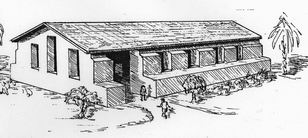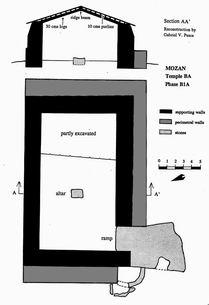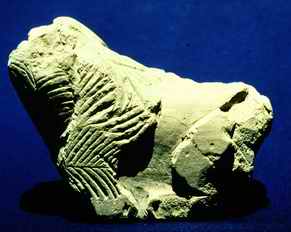Back to top: Excavations
Excavations
|
Our first excavations yielded the remains of a large structure which could readily be interpreted as a temple. We have assigned it the label "Temple BA." Even though it is at the very top of the tell and very near the modern surface, it dates back to about 2400 B.C. or slightly later. Only the lowest courses of the walls and the floor surfaces were still extant. Because of its high elevation, we knew that the temple had to be built atop some sort of artificial support – which we know now to have been a large terrace (BT), built of stones and mudbrick. |
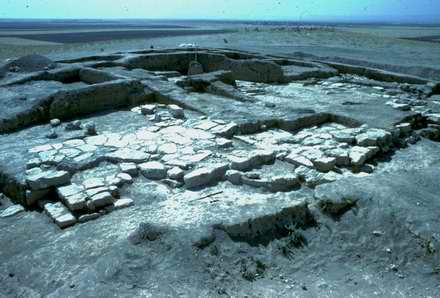
|
Back to top: Excavations
Structure
Back to top: Excavations
The temple’s lion
Back to top: Excavations
The lion of Tish-atal
|
A famous bronze statue (sold on the antiquities market long before our excavations and now in the Metropolitan Museum of Art) records the building of a temple in Urkesh by king Tish-atal. We think it possible that this is the foundation deposit for the temple that we have excavated. A second similar lion peg is today kept (together with a clay tablet, inscribed with a seventeen-lines text) at the Louvre.
|
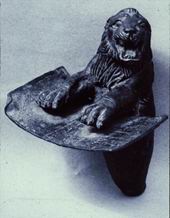
|
